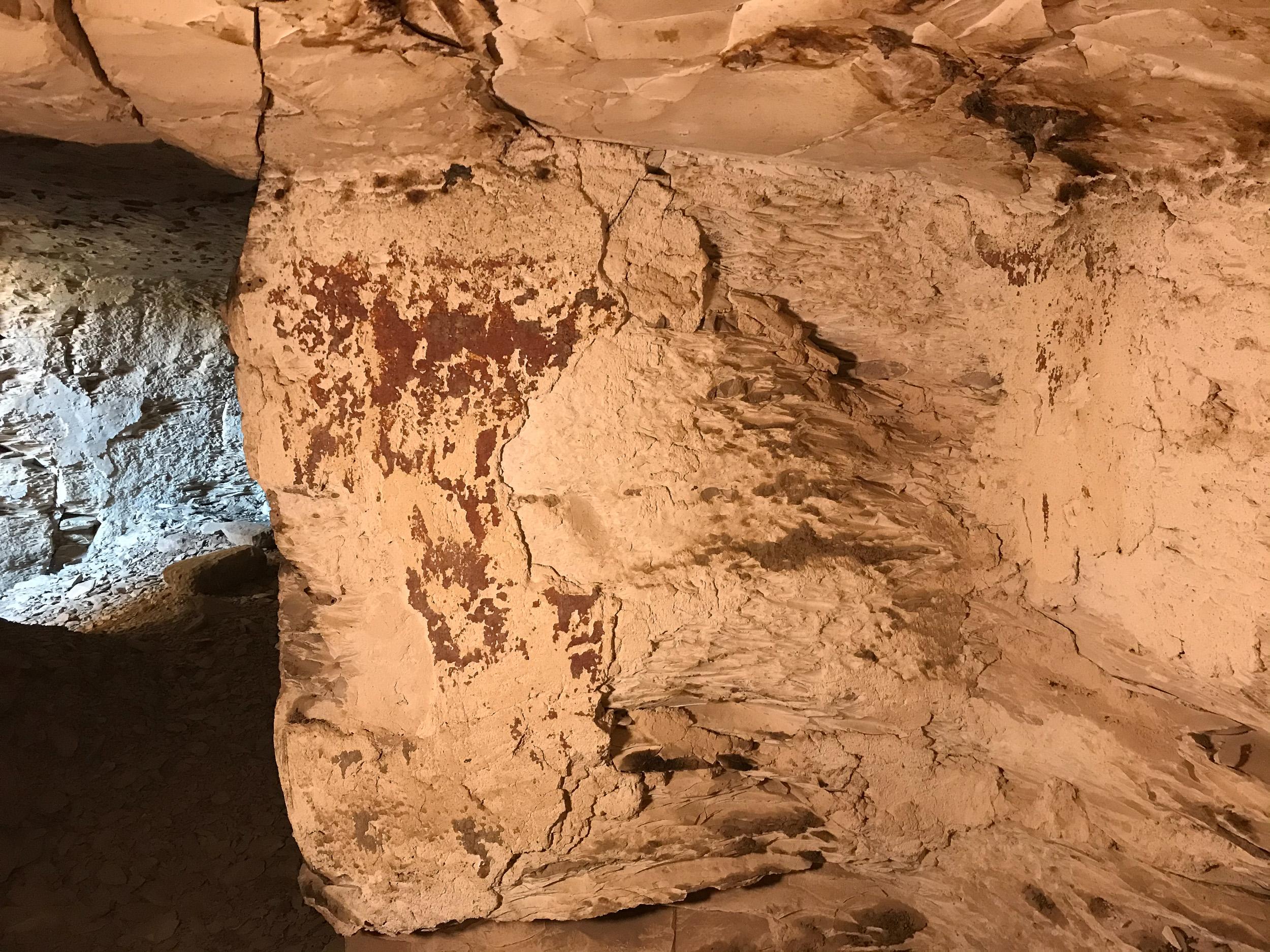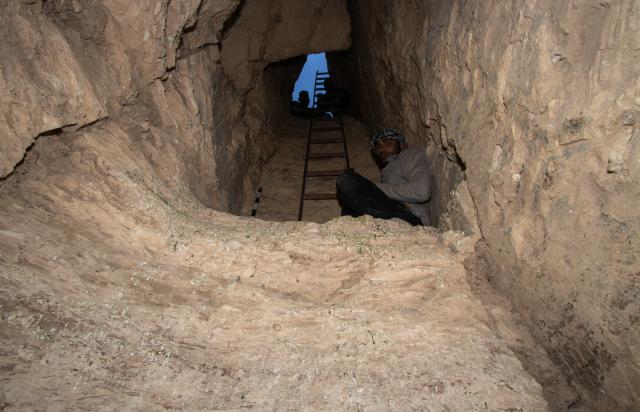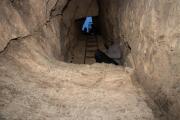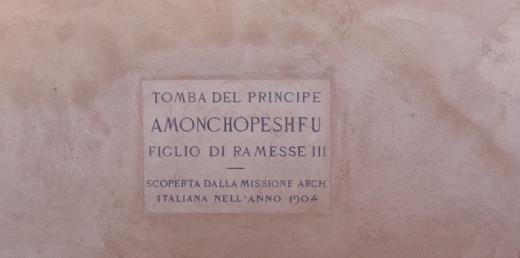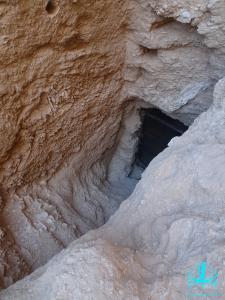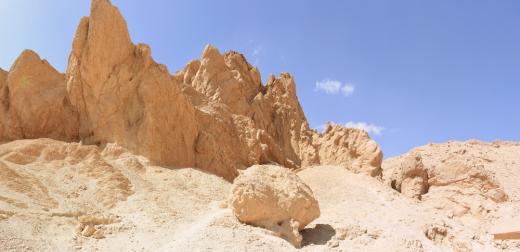Wadi A-5
Anonymous
Entryway A
See entire tombA 5m deep shaft cut into a cleft of the terrace below the cliff leads down to the tomb. The walls are rough and unplastered and there is a intermediate ledge halfway down the shaft.
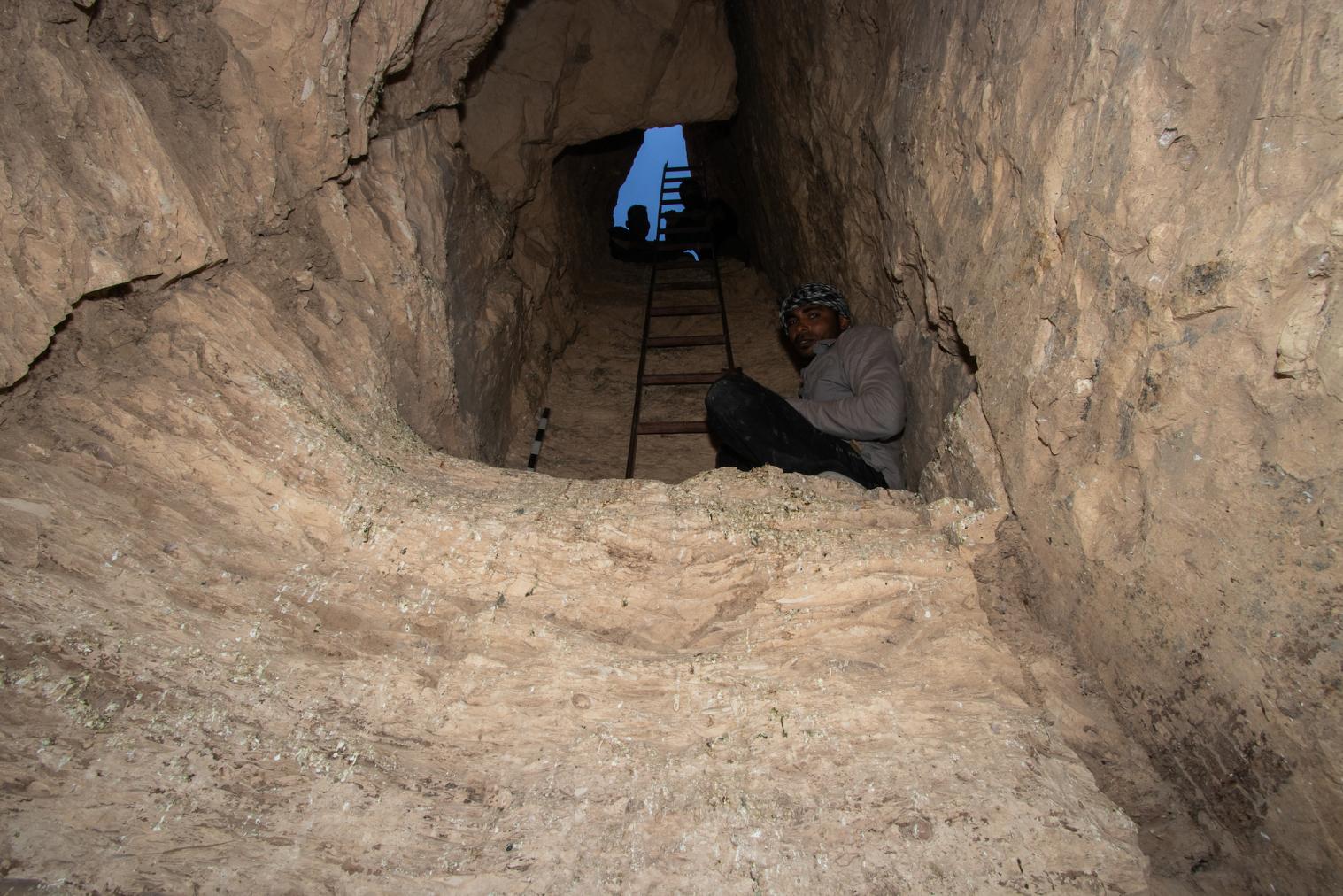
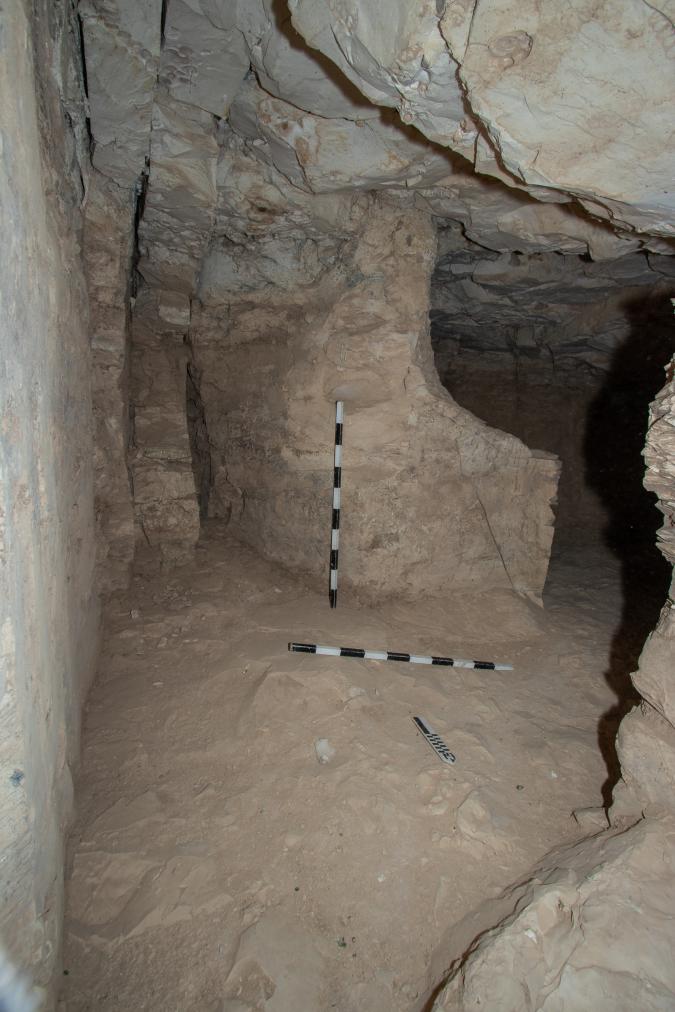
Burial chamber B
See entire tombThis large, L-shaped burial chamber lies perpendicular to the shaft's axis. The walls are rough and undecorated and the southern side of the chamber is unfinished.
Relationship to main tomb axis:
PerpendicularChamber layout:
Flat floor, no pillarsFloor:
One level
About
About
Wadi A-5 is located below the cliff at the end of a tributary branch of Wadi Jabbanat Al-Qurud called Wadi Sikkat Taqat Zayid (Howard Carter’s Wadi A). It is cut into a cleft of the terrace below the cliff and north of Hatshepsut’s tomb (Wadi A-2). The tomb consists of a deep shaft entrance (A) that leads down into an L-shaped undecorated and unfinished burial chamber (B). The owner of the tomb is unknown.
The tomb was first noted by Howard Carter during his survey of the Western Wadis in 1916-1917. He speculated that it had been open since the Coptic Period as he found pottery fragments in the tomb that date to that time. By the time that Elizabeth Thomas surveyed the area, she could not find the tomb and surmised that it had either been naturally reburied or destroyed during the building of a road by Émile Baraize for the transportation of Hathsepsut’s Sarcophagus from Wadi A-1. The tomb was rediscovered in 2021 by the joint mission of the New Kingdom Research Foundation and the Cambridge Expedition to the Valley of the kings. The above plan is based on their findings. Due to Wadi A-5’s close proximity to Hatshepsut’s cliff tomb (Wadi A-1), it has been dated to the 18th Dynasty.
Noteworthy features:
Wadi A-5 is an 18th Dynasty shaft tomb situated north of Hatshepsut’s cliff tomb in Wadi A. Its location had been lost since Howard Carter’s survey of the Western Wadis and was recently rediscovered by the joint mission of the New Kingdom Research Foundation and the Cambridge Expedition to the Valley of the Kings.
Site History
The tomb was constructed in the 18th Dynasty. It is not clear whether it was unfinished and abandoned or whether it was emptied at a later stage. Coptic materials were discovered in the tomb by Howard Carter in 1916-1917.
Dating
This site was used during the following period(s):
Exploration
Conservation
Site Condition
The tomb is threatened by erosion due to water infiltration. It is also in danger of being reburied once again by debris falling from the cliff or being carried in by flooding.



Articles
Tomb Numbering Systems in the Valley of the Queens and the Western Wadis
Latest Discovery in Wadi C (2022)
Geography and Geology of the Valley of the Queens and Western Wadis
Bibliography
Carter, Howard. A Tomb prepared from Queen Hatshepsut and other Recent Discoveries at Thebes. The Journal of Egyptian Archaeology, 4 no. 2/3 (1917): 107-118.
Lilyquist, Christine with contributions by James E. Hoch and A.J. Peden. The Tomb of Three Foreign Wives of Tuthmosis III. New York: The Metropolitan Museum of Art, 2003.
Litherland, Piers. The western wadis of the Theban necropolis: a re-examination of the western wadis of the Theban necropolis by the joint-mission of the Cambridge Expedition to the Valley of the Kings and the New Kingdom Research Foundation, 2013-2014. London: New Kingdom Research Foundation, 2014.
Thomas, Elizabeth. The Royal Necropoleis of Thebes. Princeton: privately printed, 1966.
